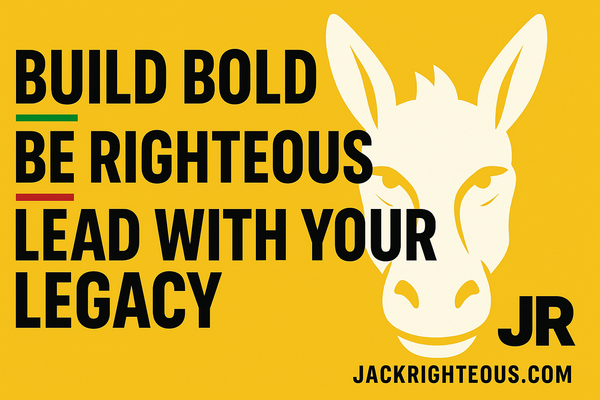
AI Covers Are Going Viral — But The Legal Trap Is Real
Gary Whittaker
AI Covers Are Going Viral — But The Legal Trap Is Real
November 2025 • by Jack Righteous
AI-generated music covers have exploded across YouTube, TikTok, and Spotify. From 90’s rock hits reimagined as 60’s soul tracks to pop anthems turned into gospel ballads, creators everywhere are exploring what happens when machine learning meets nostalgia. But while the sound is new, the legal and ethical questions are not — and they’re catching a lot of people off guard.
The Rise of the AI Cover Trend
AI tools can now mimic voices, flip genres, and reconstruct famous songs in seconds. The results often go viral — especially when the audience recognizes the source material but hears it through a completely different era or style.
However, what many don’t realize is that these projects often cross into copyright territory the moment they use protected lyrics, melodies, or recognizable performances.
Why This Is a Legal Minefield
1. Human Authorship Still Matters
Under U.S. law, creative works must have a human author to qualify for copyright protection. AI-only creations — even impressive ones — often don’t meet that standard. That means if your AI-generated cover goes viral, you may not own it in any enforceable way.
2. Two Rights, Two Problems
Every song has at least two separate copyrights:
- The composition (lyrics and melody)
- The sound recording (the master)
When you create a cover — AI or otherwise — you’re using the original composition. That means you need a mechanical license to legally distribute it (on Spotify, Apple, etc.), and often a sync license if you post it on YouTube or TikTok with video content.
3. Voice Cloning and Likeness Laws
Using AI to replicate an artist’s voice adds another layer of risk. Beyond copyright, you can trigger right of publicity or personality rights issues, especially in countries like the U.S., U.K., and Canada. Even if your intent is artistic tribute, the law may still see it as unauthorized impersonation.
Legal Checklist: How to Stay Safe
| Step | What to Do | Why It Matters |
|---|---|---|
| 1. Check the creation platform’s terms | Some AI tools (like Suno) forbid copyrighted lyrics. Only use original text or public-domain works. | Prevents automatic takedowns or bans. |
| 2. Secure a mechanical license | Use a distributor that handles cover licensing (e.g., DistroKid Cover Song License). | Ensures royalties reach the original songwriters. |
| 3. For video posts, confirm sync rights | YouTube, TikTok, and Instagram often require permission to sync music to visuals. | Prevents copyright claims or demonetization. |
| 4. Avoid using voice models of real artists | Instead of cloning, create a “genre-flip” interpretation with new vocals or AI-neutral voices. | Protects against likeness and publicity claims. |
| 5. Add your own creative contribution | Use AI as a tool — not the whole performance. Rework the arrangement, tempo, or instrumentation. | Keeps your human authorship valid and your art original. |
Genre Flips vs. True Covers
A genre flip means transforming the feel of a song — say, turning a 90s rock anthem into a 60s soul groove — without directly copying its melody or lyrics. It’s a creative way to explore musical eras without infringing on someone else’s property.
This is how many YouTubers get away with “AI-style” reinterpretations: they aren’t uploading covers; they’re producing original works inspired by other genres or artists.
Why Platform Choice Matters
- Suno AI: Does not allow copyrighted lyrics. Stick to originals.
- BandLab: Allows collaborations and remixes, but only if you own or have rights to all elements.
- DistroKid: Offers built-in cover licensing for distribution to Spotify, Apple, etc.
- YouTube: Requires sync rights if you use visuals with copyrighted music; claims may be automatic.
Best Practices for Independent Creators
- Focus on vibe recreation instead of lyric reproduction.
- Document your workflow — prompts, edits, arrangement decisions.
- Be transparent about AI usage in your descriptions or credits.
- Keep learning copyright basics — ignorance isn’t protection.
Creative Freedom Without the Risk
Genre-flip covers show how AI can bridge decades of sound. You can channel the energy of Motown, the grit of Grunge, or the shimmer of 80s synth-pop — without copying what’s protected. The goal isn’t imitation; it’s inspiration.
Learn How to Build Your Own Legal Genre Flip
Visit JackRighteous.com → open the full menu → select SUNO AI ONLINE Guide (first option). Scroll to the bottom and click GENRE GUIDES to see exactly how to build original, legal, and publishable AI genre transformations.
*Disclaimer: This article is for educational purposes only and does not constitute legal advice. Always review the latest copyright laws and platform terms before publishing or monetizing AI-generated music.*
